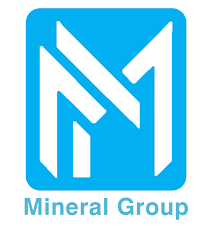Monolithisch India Limited (SME IPO) Details
12 Jun 2025
₹143000
1000
₹134- ₹143
16 Jun 2025
18 Jun 2025
19 Jun 2025
Application Details
Monolithisch India IPO is a bookbuilding of ₹82.02 crores. The issue is entirely a fresh issue of 54.48 lakh shares.
Monolithisch India IPO bidding opened for subscription on June 12, 2025 and will close on June 16, 2025. The allotment for the Monolithisch India IPO is expected to be finalized on Tuesday, June 17, 2025. Monolithisch India IPO will be list on NSE SME with a tentative listing date fixed as Thursday, June 19, 2025.
Monolithisch India IPO price band is set at ₹135 to ₹143 per share. The minimum lot size for an application is 1000. The minimum amount of investment required by retail investors is ₹1,35,000. But it is suggested to the investor to bid at the cutoff price to avoid the oversubscription senerio, which is about to ₹1,43,000. The minimum lot size investment for HNI is 2 lots (2,000 shares) amounting to ₹2,86,000.
About Monolithisch India Limited (SME IPO)
Incorporated in August 2018, Monolithisch India Limited is engaged in the manufacturing and supply of specialized "ramming mass," a heat insulation refractory widely used in induction furnaces within the iron and steel industry. The company offers a range of products, including SGB-777, SLM-999, BG-77, Quartzite Grain SLM-980, and SLM 980. ISO certified,
Monolithisch India focuses on producing high-quality ramming mass that serves as a critical refractory consumable for iron, steel, and foundry plants. Its manufacturing facility is located in Purulia, West Bengal. The company primarily caters to iron and steel producers in Eastern India, with a strong client base across West Bengal, Jharkhand, and Odisha. Notably, its customer base has expanded from 43 in 2023 to 61 in 2025.
FAQ
IPO stands for "Initial Public Offering." It's the process through which a privately-held company becomes publicly traded by offering its shares to the general public and listing them on a stock exchange for trading. This allows the company to raise capital from investors and grants individuals and institutions the opportunity to invest in and own a portion of the company.
The life cycle of an IPO, or Initial Public Offering, begins with a company's decision to go public. It involves hiring underwriters, registering with regulatory authorities, determining the IPO price, marketing to investors, and the subscription period where investors place orders for shares. After allocation and listing, shares become publicly tradable, and the company enters the secondary market. Ongoing reporting and corporate governance are crucial as the company continues to operate as a publicly-traded entity. The IPO aims to raise capital for growth and provides investors with opportunities to trade shares in the company.
An IPO (Initial Public Offering) is when a private company goes public by selling shares to the public. Investors buy these shares, giving them ownership in the company. It's a way for companies to raise capital and expand. The process involves underwriters, regulatory filings, setting the IPO price, and marketing to investors. After the IPO, shares can be traded on a stock exchange. IPOs offer opportunities and risks, so investors should research and consider carefully.
"Upcoming IPOs" refers to initial public offerings that have been announced by private companies but have not yet occurred. These are companies that plan to go public in the near future by issuing shares to the public and listing them on a stock exchange. Investors often keep an eye on upcoming IPOs as they represent opportunities to invest in companies at their early stages of public trading, potentially capturing growth potential. These offerings are typically accompanied by significant media and investor attention as they approach their launch dates.
 Download
Download